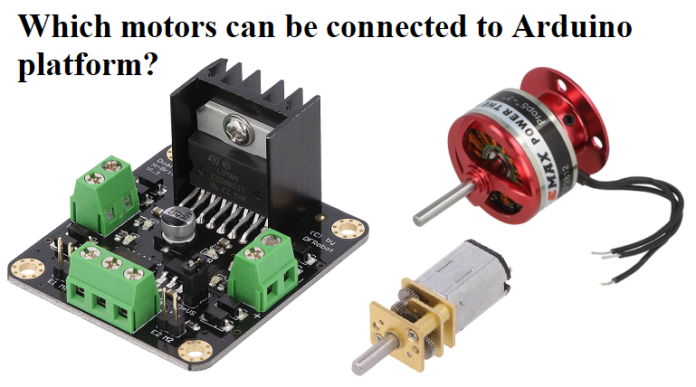
Arduino programming platform is compatible with all low power electric motors available on the market. You can connect the following motors to Arduino platforms:
- brushless DC electric motors with commutators;
- brushed DC motors, the simplest DC electric motors;
- vibration motors that generate vibrations with shaft movement;
- stepper motors that ensure highly precise control with shaft pulses;
- EDF drives, combining fans and motors in a single housing;
- linear actuators that enable linear movement;
- servo motors,
- small vacuum and water pumps.
The parameters you should pay attention to when choosing an electric motor for your Arduino platform depend on the type of a particular actuating module. Among the most important ones are:
- supply current [A] – the current required to properly power the engine;
- rated voltage [V] – this is the voltage that your module will use to operate (Arduino modules typically use 12V);
- torque [Nm] – a key parameter of every electric motor (and other motors) that determines its power: higher torque means more power;
- rotational speed – [rpm] – determines the speed of shaft rotations;
- mass and size [g and mm] – these parameters are especially important for lightweight modules: you must consider motor size when building them;
- resolution [number of steps] – applies only to stepper motors and determines the precision of shaft movement;
- line speed [mm/s] – applies only to linear actuators and determines the speed at which the motor can extend its shaft in a linear motion.


















